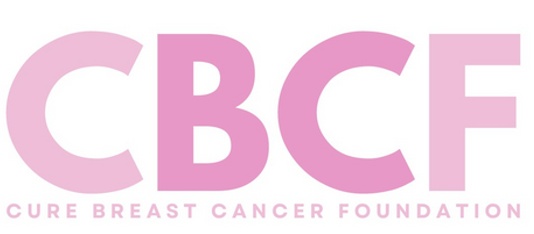Dr. Larry Norton's Cancer Research Update
This has been another extraordinarily productive year for CBCF-supported research. Our focus on the aberrant ability of cancer cells to migrate as well as to produce progeny by cell division has continued to fuel significant new knowledge of direct relevance to conquering cancers of the breast and cancers in general.
As some of you know, my first major oncologic investigation-in the mid-1970s-was in the growth kinetics (mathematics) of cancers. Cancers do not growth steadily by simple exponential kinetics (la2a4a8a16 etc.) but by a pattern first described by Benjamin Gompertz in 1825, in which they tend to grow slower as they get larger. With my colleague Richard Simon I used Gompertzian growth and other observations to formulate the Norton-Simon Hypothesis that states that the rate at which a cancer shrinks in response to therapy is proportional to what its rate of growth would have been had that tumor at that size been left untreated. This concept led to laboratory and clinical work that culminated in 1997 in a clinical trial in the National Cancer Institute system of an approach to drug therapy called sequential, dose-dense treatment. The success of that trial in breast cancer led to more than a dozen other trials involving over 34,000 volunteer patients. Last December at the annual San Antonio Breast Cancer Symposium (the largest gathering of breast cancer doctors and scientists in the world) a twenty-year analysis of those trials was presented by The Oxford (UK) Early Breast Cancer Clinical Trialists Consortium demonstrating the safety and remarkable efficacy of this approach, which is now an international standard. This confirms the validity of the mathematical concepts but does not explain the biological reasons for them.
The relevance of this to the CBCF is that because of work supported by the CBCF we now have advanced ideas about (1) why cancers grow in a Gompertzian fashion and (2) why the Norton Simon Hypothesis is so accurate and so useful. Self-seeded growth (cancers leaving the tumor mass, circulating, then coming back to the outside of the mass) explains the Gompertzian pattern because as masses increase in size the surface area increases less rapidly than the volume. And when the cancer cells return to the tumor they bring white blood cells and blood vessel precursor cells with them, fueling cancer growth. As described in previous reports, Ors. Elizabeth Comen, Maria Kleppe, Ross Levine and Jorge Reis Filho of MSKCC have found that many of these white blood cell s harbor DNA mutations that make them particularly potent at supporting the viability of the whole cancer, and possibly "protecting" the cancer from attack by other immune system white blood cells. As I type a key experiment is underway to test if disrupting these mutant white blood cells can make cancers that are resistant to chemotherapy sensitive, allowing established anti-cancer treatments more potent and thereby leading to better clinical results.
Furthermore, we are very close to being able to answer the question if in the rare cases of leukemia that occurs after breast cancer therapy the leukemic cells were present in the breast cancers to begin with; that is, anti-cancer therapy did not cause the leukemias but rather unmasked them. Knowing that these mutant white blood cells are present could allow us to eradicate them at the same time as we cure the breast cancer, thereby prevent this late complication.
For the Norton-Simon Hypothesis to be valid (as it has been proven to be) we would need a mechanism by which larger tumors that are growing more slowly also respond less briskly to therapy than smaller cancer that are growing more quickly. The answer may be found in the CBCF supported work of Dr. Rachel Hazan of the Albert Einstein College of Medicine. She has found that chemotherapy disrupts a key intracellular molecule called p21 that regulates both cell division and cell migration. While treatment kills dividing cells and thereby slows growth it also increases cell migration! Some of that migration is self-seeding, thereby blunting the anti-mitosis actions of the treatment. Based on this work we are searching for anti-migration drugs to combine with chemotherapy and invalidate the Norton-Simon impediment to cancer cure. This is a profoundly exciting possibility and another example of the kind of advances that can only be made by the type of creative investigation made possible by your philanthropic funding.
Under the leadership of Drs. Richard Kolesnick and Philip Paty at MSKCC we continue to explore the biology of the stem-like cells found in abundance in colon cancer. Disruption of the physical contact of these stem-like cells from normal cells in their microenvironment underlies their production of cancer in terms of both growth and migratory capacity. Their identification of LGRS as a key molecule in this process has opened many new areas for exploration.
As was described earlier in this letter, mathematics has led to real advances in the fight against breast cancer leading-in the example provided- to the establishment of a standard of care that has saved and will continue to save tens of thousands of lives each year. CBCF scientists believe that this is just the top of the iceberg of possible achievements and therefore intend to focus new efforts on using the most advanced tools of mathematical and computation science to dissent the molecular biology (DNA, RNA and protein) of cancer to motivate truly novel laboratory and clinical experiments. The combination of mathematics, biology and clinical expertise-and the ability to coordinate these sciences with clinical trial capabilities-is special to CBCF and we believe could be a major advance in our international battle against all neoplastic diseases.
We express our deep gratitude to the CBCF for its support and for joining with us in our mission to create a cancer-free world.
Larry Norton, M.D. Professor of Medicine
Weill Medical College of Cornell University
